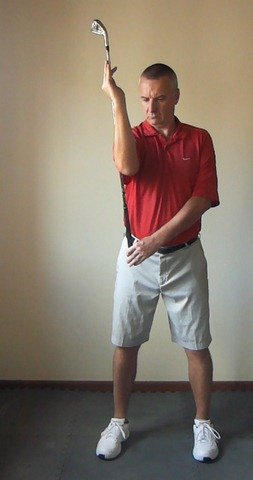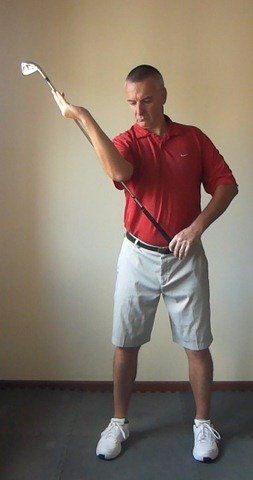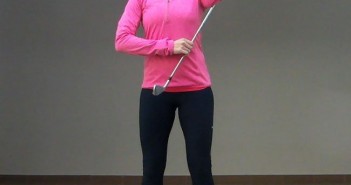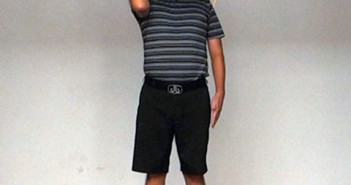In anatomy, internal rotation (also known as medial rotation) is rotation towards the centre of the body.
External rotation (or lateral rotation) is rotation away from the centre of the body.
Internal and external rotation of the arms (humerus) occurs at the shoulders, causing the elbow to rotate — see Figures 2 and 3.
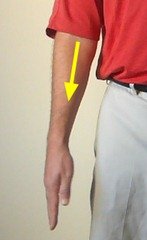
Figure 1. Neutral Arm Position (the anatomical position)
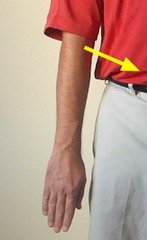
Figure 2. Internal Rotation

Figure 3. External Rotation
Internal Rotation
Internal rotation of the arm is most easily observed when the elbow is held at a 90-degree angle and the fingers are extended so they are parallel to the ground — see Figure 5. Internal rotation occurs when the arm is rotated at the shoulder so that the fingers change from pointing straight forward to pointing across the body. For your right arm, this means rotating your upper arm counter-clockwise (clockwise for your left arm).
When your arm is hanging by your side in good posture (the anatomical position), the fronts of your elbows (the antecubital region) will face straight ahead — see Figure 1. Internal rotation can be observed as rotating the front of your elbow in towards your body — see Figure 2. This means rotating the front of your elbow counter-clockwise for your right arm, or clockwise for your left arm.
The muscles involved in the internal rotation of the arm are the subscapularis, latissimus dorsi, teres major, pectoralis major, and the anterior fibres of the deltoid.
External Rotation
External rotation of the arm is the opposite of internal rotation of the arm — see Figure 6.
For your right arm, external rotation means rotating your upper arm clockwise (counter-clockwise for your left arm).
When your arm is hanging by your side in good posture (the anatomical position), the fronts of your elbows will face straight ahead — see Figure 1. External rotation can be observed as rotating the front of your elbow out away from your body — see Figure 3. This means rotating the front of your elbow clockwise for your right arm, or counter-clockwise for your left arm.
The muscles involved in the external rotation of the arm are the infraspinatus and teres minor, and the posterior fibres of the deltoid.
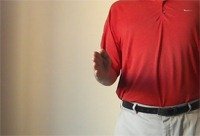
Figure 4. Neutral Flexed Arm Position
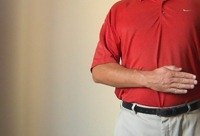
Figure 5. Internal Rotation of the Flexed Arm

Figure 6. External Rotation of the Flexed Arm
Internal and External Rotation of the Arms in the Golf Swing
Once again, our apologies to the lefties out there, but for simplicity we will describe movements for the right handed golfer.
When applied correctly, external rotation of the right arm will enable you to achieve the perfect top of the backswing position, where your right triceps are touching your right pectorals, and your right forearm is near vertical. It facilitates a much simpler swing, and helps you to get the golf club perfectly on plane.
You can learn a lot more about how and why to use internal and external rotation of your arms through the golf swing in the Golf Loopy Swing like a Champion system.
Note that, if you are in good posture, the fronts of your elbows will point straight forwards when your arms are by your sides, in the anatomical position — see Figure 1.
At address, your right arm should be slightly rotated externally, the front of your elbow pointing away from you and slightly to the right, thus avoiding the temptation to internally rotate your arm as you take your grip.
Note that your wrist can rotate independently of your upper arm (humerus), through supination and pronation of your forearm — see Wrist Articulations — so you can take your grip correctly while still having your right arm slightly externally rotated, simply by pronating your wrist.
During the backswing, your right arm should rotate externally even more in order to help keep your right upper arm (humerus) in front of your right shoulder, and the front of your right elbow pointing straight up.
This helps you to avoid folding your arm too early in the backswing and getting the golf club too deep and flat (and thus getting stuck on the downswing). It enables you to generate more width and to get the club on-plane more simply, just by bending your right elbow as you move towards the top of the backswing.
The external rotation of your right arm increases slightly during the transition phase, as your right arm moves ahead of your hands and club, stretching your lats, pectorals and deltoid for added power in the downswing.
Late in the downswing, your right arm internally rotates as your right elbow extends coming into impact, releasing the power of your lats, pectorals and deltoid into the golf club. This power is why the right hand is often referred to as the “speed hand” in the golf swing.
Your left arm will internally rotate a little naturally in the backswing, with no conscious effort.
In the downswing, your left arm will internally rotate a little more to keep the club on plane. The back of your left elbow should be facing the target at impact to avoid injury and discomfort (golfer’s elbow) caused by the vibrations of the golf club as it strikes the ground. The precise angle of the club face through impact is controlled by supinating your left wrist rather than rotating the arm, this promotes stability and control.
Improving Your Range of Motion
If you have any physical problems or any discomfort in your shoulders, you should consult with your physician before trying to increase your range of motion.
For most people, the range of motion for external rotation of the shoulder, rotating the forearm beyond vertical, is limited, it’s not something we do very much in our normally daily activity. But this is very beneficial to your golf swing, and it can be increased with simple stretching.
A great stretch for this shown in Figures 7 and 8. Stand with your right arm bent at the elbow, at about 100 degrees, and with your elbow up in front of, and a little lower than, your shoulder. This position mirrors the position of your right arm at the top of the backswing. Then hold a golf club in your fingers and down the outside of your humerus, just above the elbow. Hold the bottom end of the club with your left hand (see Figure 7) and pull gently, keeping your elbow still, to stretch the external rotation of your right arm — see Figure 8.
Having enough external rotation range of motion is most important for your right arm, to help you achieve the perfect top of the backswing position, but you should perform this stretch with both arms to keep them even.
You may also want to the following exercises from the Golf Loopy Train like a Champion System:
- The basic Shoulder External Rotation Exercise.
- The Sidestepping Shoulder External Rotation (Band) Exercise focuses on building stabilising strength in your rotator cuff.
- The Shoulder External Rotation (Band) Exercise, which targets injury prevention.
- The Shoulder Internal Rotation (Side Lying) Exercise, which stretches your shoulder in the opposite direction, improving your shoulder mobility and protecting your rotator cuff from injury.
If you have any questions or comments about this or other articles on Golf Loopy, please send us an email.
You May Also Like…
Introduction to the Swing like a Champion System.
Overview of a Great Golf Swing, which summarises the correct movements in a great golf swing.
Why is Having the Shoulders “Connected” So Important? Which explains how the shoulders enable the power of the big muscles in your legs and core to be transferred to the golf club.
The Role of the Right Arm in the Golf Downswing, which describes how the right arm transfers energy to the golf club in the downswing.
Golf Anatomy and Kinesiology, a collection of articles describing the roles of the muscles involved in the golf swing.
Latissimus dorsi muscle, which describes the widest and most powerful muscle of the back, and how it is used in the golf swing.
The Role of the Deltoids in the Golf Swing.
The Role of the Teres Minor in the Golf Swing.


